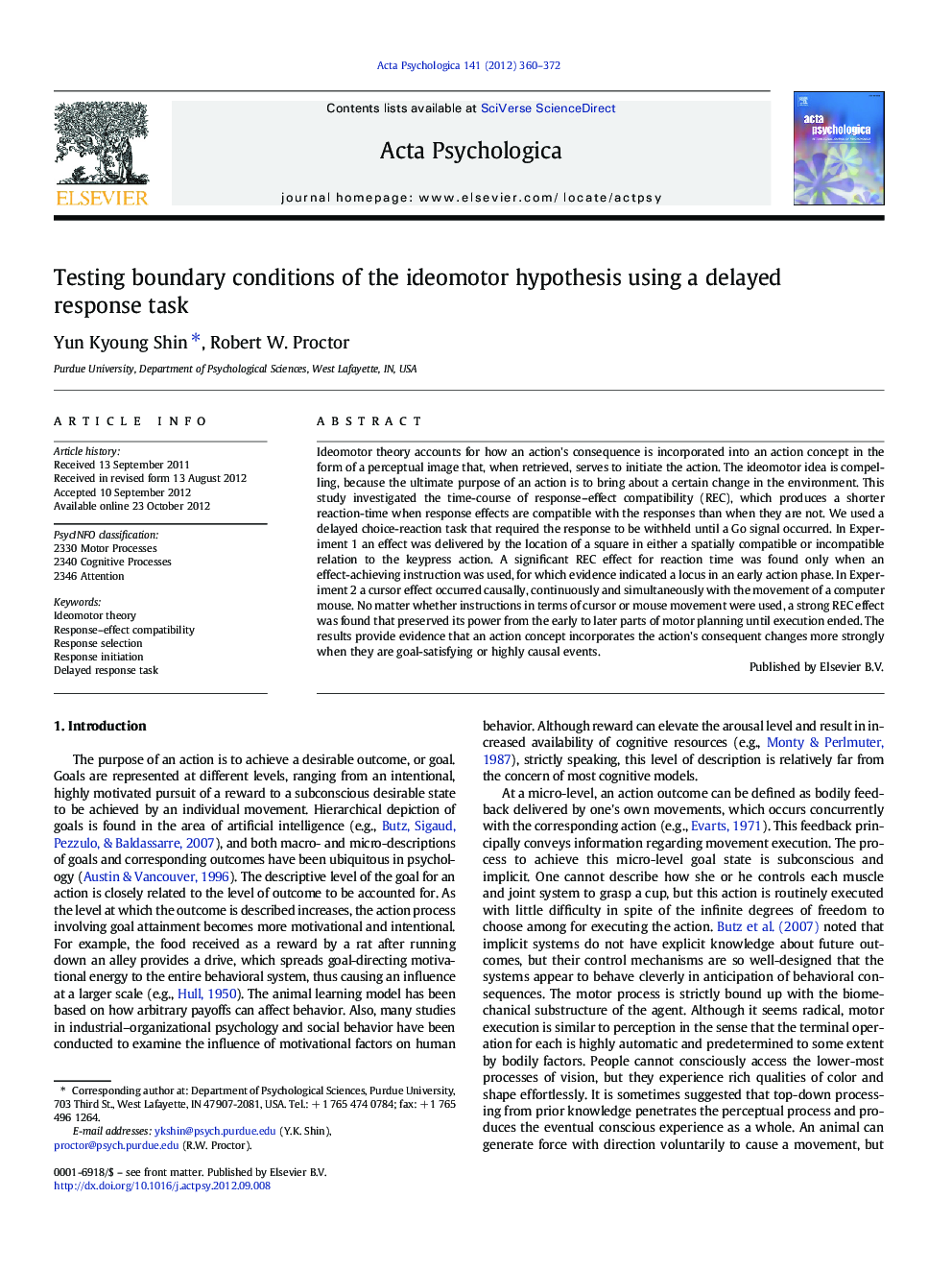| Article ID | Journal | Published Year | Pages | File Type |
|---|---|---|---|---|
| 919959 | Acta Psychologica | 2012 | 13 Pages |
Ideomotor theory accounts for how an action's consequence is incorporated into an action concept in the form of a perceptual image that, when retrieved, serves to initiate the action. The ideomotor idea is compelling, because the ultimate purpose of an action is to bring about a certain change in the environment. This study investigated the time-course of response–effect compatibility (REC), which produces a shorter reaction-time when response effects are compatible with the responses than when they are not. We used a delayed choice-reaction task that required the response to be withheld until a Go signal occurred. In Experiment 1 an effect was delivered by the location of a square in either a spatially compatible or incompatible relation to the keypress action. A significant REC effect for reaction time was found only when an effect-achieving instruction was used, for which evidence indicated a locus in an early action phase. In Experiment 2 a cursor effect occurred causally, continuously and simultaneously with the movement of a computer mouse. No matter whether instructions in terms of cursor or mouse movement were used, a strong REC effect was found that preserved its power from the early to later parts of motor planning until execution ended. The results provide evidence that an action concept incorporates the action's consequent changes more strongly when they are goal-satisfying or highly causal events.
► The time-course of response-effect compatibility was studied in two experiments.. ► Results depended on instructions and the linkage between the response and effect. ► Early mediation was found in a keypress task with an effect-achieving instruction. ► Evidence for both early and late mediation was found in a mouse-movement task. ► An action concept includes goal-satisfying or highly causal effects most strongly.
